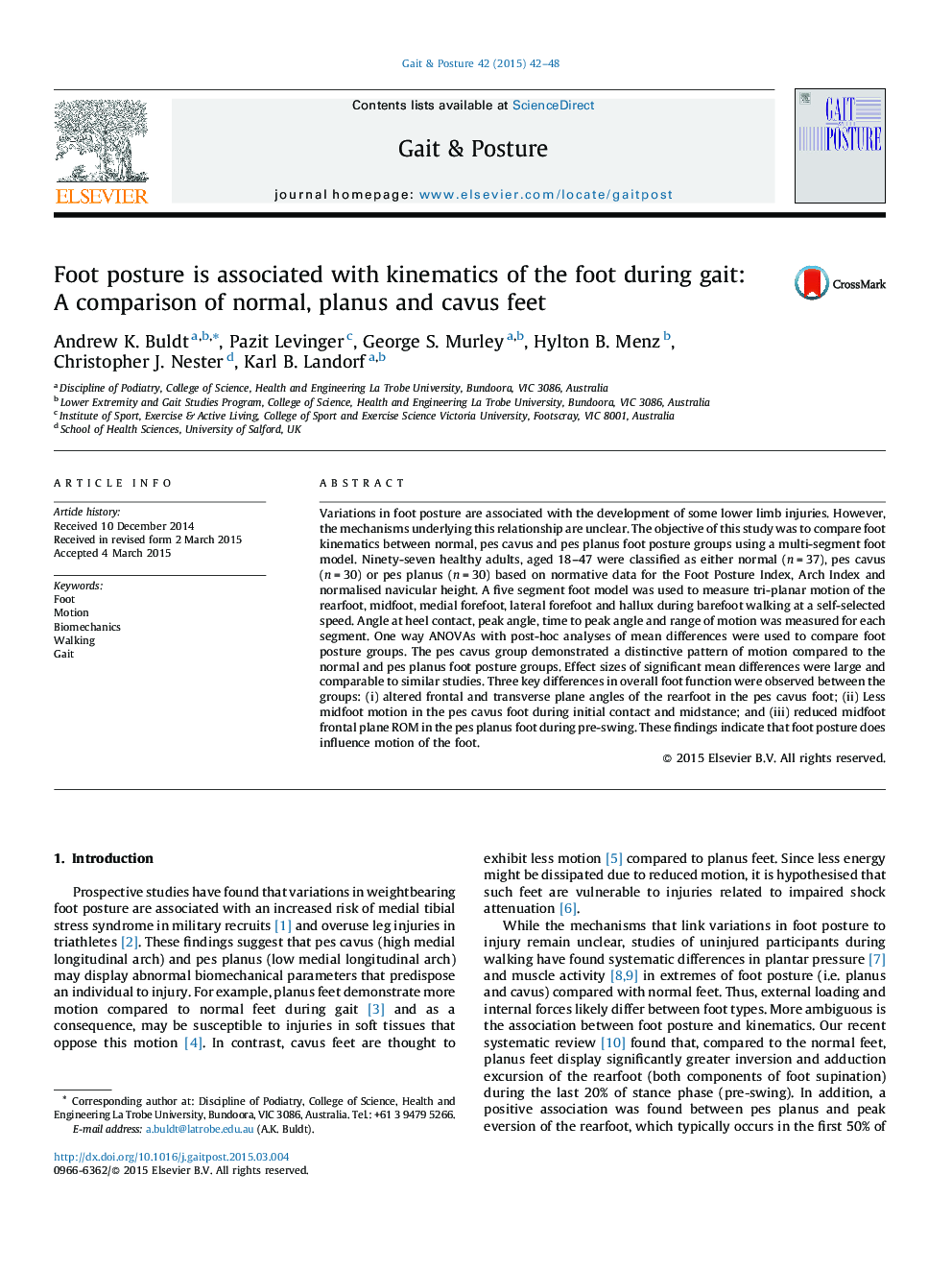| Article ID | Journal | Published Year | Pages | File Type |
|---|---|---|---|---|
| 6206055 | Gait & Posture | 2015 | 7 Pages |
â¢We compared foot kinematics between normal, cavus and planus foot posture groups.â¢A validated multi-segment foot model was used to measure tri-planar foot motion.â¢Cavus feet demonstrated distinctive motion compared to normal and planus feet.â¢Cavus feet displayed altered angles of the rearfoot and less midfoot motion.â¢Planus feet displayed reduced midfoot frontal plane motion during pre-swing.
Variations in foot posture are associated with the development of some lower limb injuries. However, the mechanisms underlying this relationship are unclear. The objective of this study was to compare foot kinematics between normal, pes cavus and pes planus foot posture groups using a multi-segment foot model. Ninety-seven healthy adults, aged 18-47 were classified as either normal (n = 37), pes cavus (n = 30) or pes planus (n = 30) based on normative data for the Foot Posture Index, Arch Index and normalised navicular height. A five segment foot model was used to measure tri-planar motion of the rearfoot, midfoot, medial forefoot, lateral forefoot and hallux during barefoot walking at a self-selected speed. Angle at heel contact, peak angle, time to peak angle and range of motion was measured for each segment. One way ANOVAs with post-hoc analyses of mean differences were used to compare foot posture groups. The pes cavus group demonstrated a distinctive pattern of motion compared to the normal and pes planus foot posture groups. Effect sizes of significant mean differences were large and comparable to similar studies. Three key differences in overall foot function were observed between the groups: (i) altered frontal and transverse plane angles of the rearfoot in the pes cavus foot; (ii) Less midfoot motion in the pes cavus foot during initial contact and midstance; and (iii) reduced midfoot frontal plane ROM in the pes planus foot during pre-swing. These findings indicate that foot posture does influence motion of the foot.
